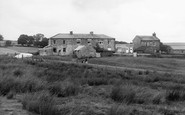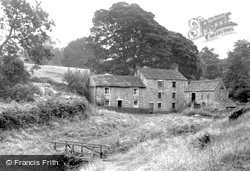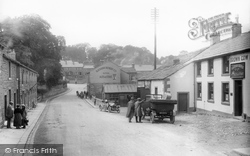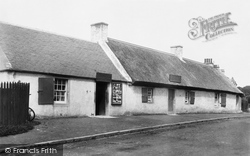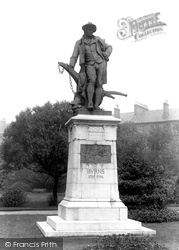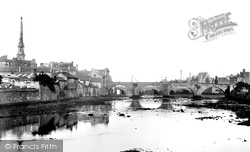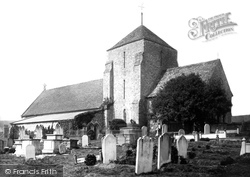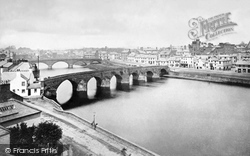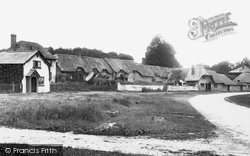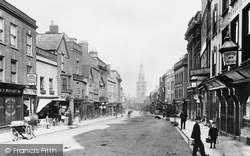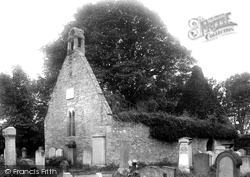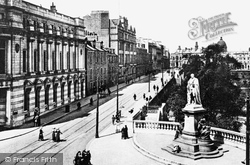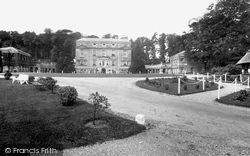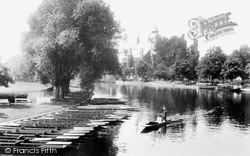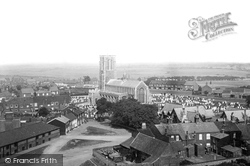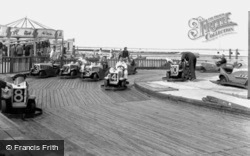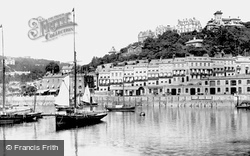Places
Sorry, no places were found that related to your search.
Photos
Sorry, no photos were found that related to your search.
Maps
39 maps found.
Books
Sorry, no books were found that related to your search.
Memories
781 memories found. Showing results 1 to 10.
Schooldays
I was born in Hayfield Cottages, Auldgirth in April 1931. My first year at school Mrs Garthwaite was my teacher. She lived in the house just north of the school. In the mid 30s my brother Bob and I saw an airship fly over Barbra Mill. ...Read more
A memory of Auldgirth in 1930 by
The Bus
My family purchased and converted an old single decker bus for us to have holidays in. It was parked on a small piece of land opposite the church. An old Gypsy caravan was parked just inside the gate to the land, I was told that it had ...Read more
A memory of Lowsonford by
Living In North Boarhunt 1965 1968
My parents moved to North Boarhunt in 1964/65. We lived at the top of Trampers Lane - sideways to what was then Doney's Garage. Our house was called "Tryfan". I went to Newton Primary School and have very ...Read more
A memory of North Boarhunt in 1965 by
Zeals House
I was evacuated to Zeals during the war from London, to I think, Zeals House. I recall the airfield, and I remember a local pub, which I think had a yew tree outside. My folks and military members would drink and dance outside under the ...Read more
A memory of Zeals in 1940 by
Combe Florey Primary School
The village school in Combe Florey closed in about 1958 I believe, it exists as a private house now, but I can still remember the mile long walk to and from it, through the lanes every morning and afternoon. Mum ...Read more
A memory of Combe Florey in 1958 by
Kingussie Holidays
Kingussie always was one of my favourite places as a young boy. My aunt and uncle lived in King Street, near the sawmill and I can still remember the smell of the wood shavings burning. I loved going down to the station and ...Read more
A memory of Kingussie by
Our Home For 30+ Years
Mam and Dad, Lizzie and Edwin Ridley, moved into Slaghill (the cottage on the right of the picture) in 1948 when I was 3 years old. Dad died there in December 1978 and Mam moved up to Chapel Cottages soon afterwards. There ...Read more
A memory of Allenheads in 1948 by
Being Young
I grew up in Maddiston. I'm only 33 and my memories are being allowed out late at night in the summer, playing tig, skipping, chapdoor run, also going for walks up behind the golf course. The village has changed a lot since then, ...Read more
A memory of Maddiston in 1982 by
Number 2 Montague Terrace
Barbara Brian. I loved reading your memories of Montague Terrace and I thank you for them. Were you the young Miss Andrews that rode that posh bicycle and lived behind the shop and did your dad at times teach tap ...Read more
A memory of Bishopstoke in 1930 by
Windsor Road
We moved to Bromley Cross about 1947 just before my sister Virginia was born, it was a lovely new prefab, but I don't remember much about the inside of it apart from the wood-burning stove, that sticks in my mind for some ...Read more
A memory of Bromley Cross in 1947 by
Captions
291 captions found. Showing results 1 to 24.
The mill is just south of the village on the Birkey Burn. The miller's house is dated 1728, and the three-storey mill building is also 18th-century.
Here we see motorists in the village - they are probably touring the area. The 'burn' part of the name comes from the stream which runs through the village.
Scotland's most celebrated poet Robert Burns was born in this simple cottage on 25 January 1759.
Born at Alloway, Ayrshire in 1759, Burns's love of poetry was instilled in him by his teacher, John Murdoch.
Robert Burns was born here on 25 January 1759. The cottage was rebuilt by the poet's father and later became an inn.
Famous as the birthplace of John Macadam in 1756 and of Robert Burns in 1759, Ayr was founded under a charter granted by William the Lion.
We are looking across the churchyard to St Margaret's Church. The church, which was renovated in the 19th cen- tury, stands on the site of a Saxon predecessor.
The River Nith divides Dumfries from Maxwelltown. Dumfries itself became a royal burgh in the 12th century, but the two towns were not officially amalgamated until 1929.
During the 1830s this pretty village was the scene of a major uprising among farm labourers, with angry mobs burn- ing hayricks and destroying machinery.
It was at a house in Westgate in February 1555 that Bishop John Hooper spent his last night before being burnt at the stake in St Mary's Square.
Robert Burns played in this churchyard as a boy, and the popular legends about hauntings and the ghostly atmosphere of the roofless ruin affected him deeply.
The River Nith divides Dumfries from Maxwelltown. Dumfries itself became a royal burgh in the 12th century, but the two towns were not officially amalgamated until 1929.
Nearby is the Grand Hotel (rooms 4s 6d, dinner 5s), the parish council building, the school board offices and a statue of Robert Burns.
Burns's father is buried in the churchyard.
The Burnhams take their name from the river Burn, which runs through this picture.
'And laughs the immortal river still/Under the mill, under the mill'. So wrote the poet Rupert Brooke about Grantchester's mill. The river may well be immortal, but the mill certainly was not.
'And laughs the immortal river still Under the mill, under the mill'. So wrote the poet Rupert Brooke about Grantchester's mill. The river may well be immortal, but the mill certainly was not.
Formerly Epsom's grandest house, Woodcote Park was bought by the RAC in 1911.
It was extensively remodelled during the 19th century by the architect William Burn; it had previously been modernised between 1768 and 1788 by John Carr of York.
Here the Memorial Building is viewed from the river. As well as a theatre, there was a library of rare Shakespearean books, and the view from the tower was highly recommended.
While many houses burned down in the fire of 1659, the 15th century church of St. Edmund survived because the churchyard served as a fire break.
Carrying Holburn Street over the Ferryhill Burn, South Bridge is an essential part of the great developments of the early 19th century. It gets no recognition from the bureaucracy.
Judging from the picture, these cars were definitely big boys' toys. The cars rattled and juddered around the circuit, and on hot days there was always the pervading smell of burning oil.
Before the coming of tourism, Torquay was an obscure fishing hamlet, its villagers scratching a living from the sea, smuggling and lime burning.
Places (0)
Photos (0)
Memories (781)
Books (0)
Maps (39)






















